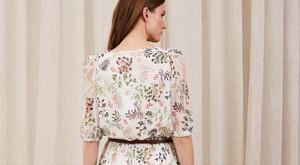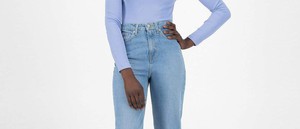- Clothes
- Bags
- Accessories
-
Inspiration
- Shoes
Is Denim Sustainable? Blue Jeans Can Be More (Or Less) Green
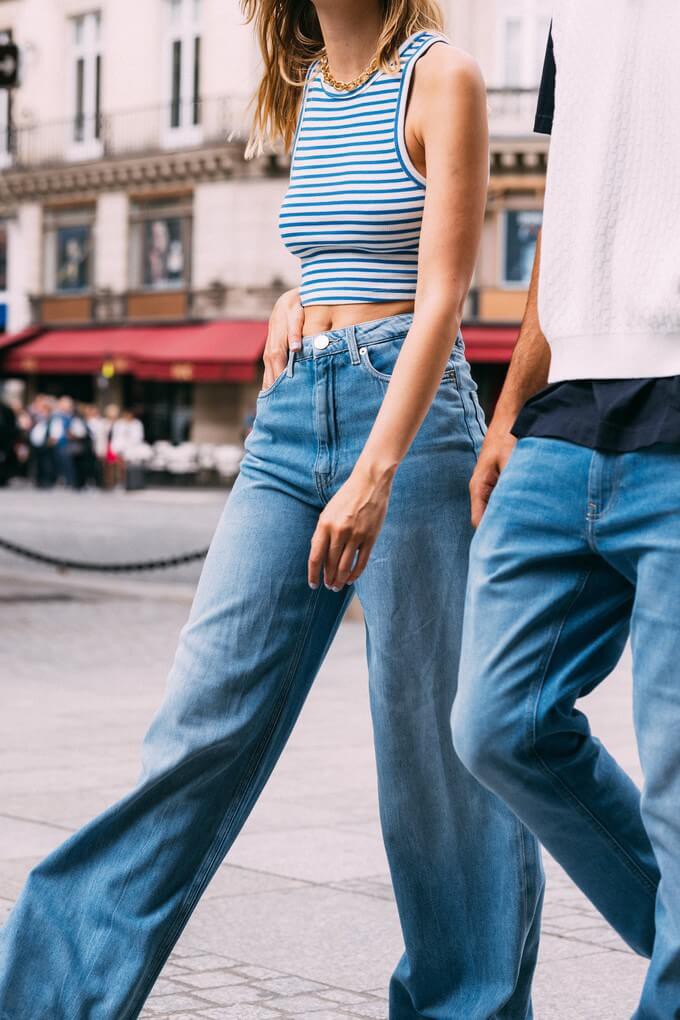
With its sturdy texture, familiar blue hue, and timeless vibe, denim is one of the most iconic and recognisable fabrics. Is it as good for the planet as it is for your wardrobe, though?
In other words, is denim sustainable? Well, not all denim products are created equal, and that’s what makes the biggest difference.
Let’s start with the fabric, though, and then see how you can choose more sustainable denim jeans and garments.
First things first: what is denim? What is denim made of?
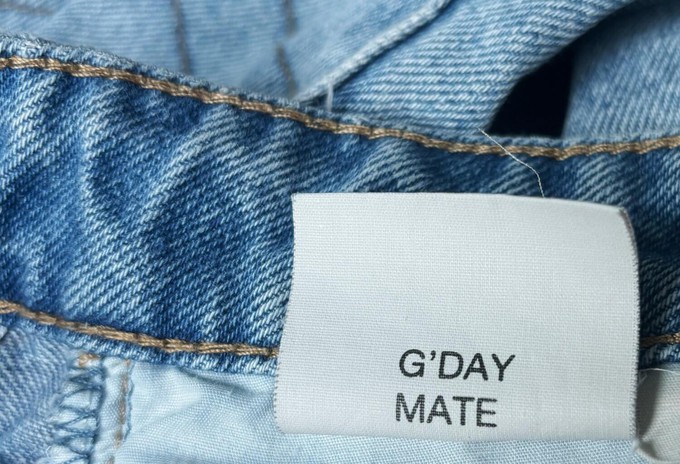
Denim is a warp-faced fabric traditionally made of cotton and dyed blue or indigo.
By the way, warp-faced simply means it’s woven in a special way (with the weft threads going under at least two warp threads) that reinforces it while also creating subtle diagonal ribbing patterns.
Since denim is mostly used for jeans, the two terms are often used interchangeably. Technically, though, jeans are the product while denim is the fabric. In fact, you can find all kinds of different denim garments and accessories too, like skirts, dungarees, shirts, and jackets (double denim, anyone?).
Curious about its name and origin? Often associated with America since it became popular when Levi Strauss patented their blue jeans in the 19th century, denim is actually European. The name comes from a fabric called “Serge de Nîmes” and woven in Nîmes, France, over 400 years ago (who would have thought?!).
Anyway, is denim good for the environment?
Denim fabric and sustainability
Here’s a simple overview of what makes denim sustainable and what about it is bad for the planet.
What are the sustainable advantages of denim?

- Natural – Denim comes from a renewable source (cotton). Often that's better compared to synthetic fabrics (like polyester) that derive from fossil fuels, aren't biodegradable, and require a chemically intensive production process
- Durable – Well, denim jeans started out as practical workwear for a reason! By choosing denim products that are made to last, you’ll help reduce the high quantities of waste generated by the fashion industry
- Biodegradable – If it’s actually made of 100% cotton, denim biodegrades in 10-12 months (although this doesn’t include buttons and rivets)
- Recyclable – As long as it’s entirely made of cotton, it can be broken down and respun to create new denim products
What are the disadvantages of denim from a sustainability perspective?
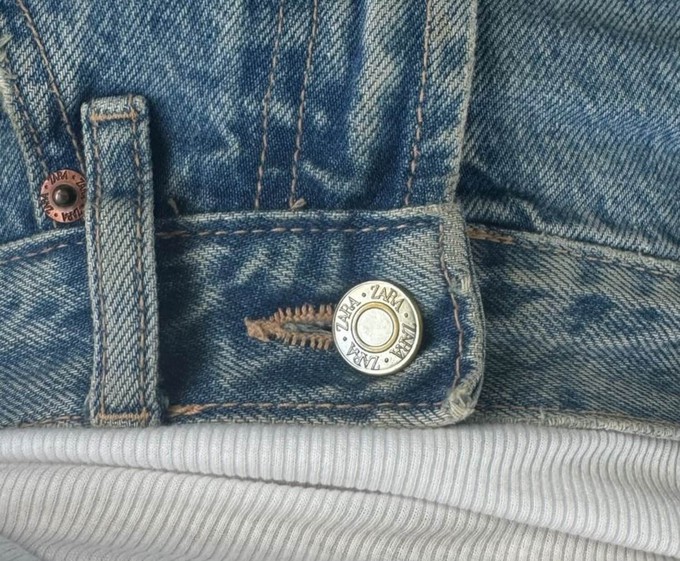
- Environmental problems of cotton – Sadly, despite being natural, conventionally grown cotton is one of the worst fabrics for the planet. It’s full of pesticides and insecticides, requires huge quantities of water and land, and causes both soil degradation and high carbon emissions
- Water-intensive production – On top of growing the cotton, spinning it into denim and dyeing it requires plenty more water, too. Altogether, we’re talking about 7,600 litres of water for a single pair of jeans!
- Dyeing process – More water, more energy, more chemicals. Sadly, many fast fashion brands also choose cheap toxic dyes that pollute bodies of water and are dangerous for garment workers
- Distressed look – We love denim’s aged vibe, but most of the methods employed to achieve it are either chemical-intensive or dangerous for workers (like sandblasting)
- Chemical-heavy production – From cotton pesticides to the dyeing process and treating the fabric, denim requires A LOT of chemicals
- Blended fabric – Nowadays, it’s rare to find denim products made of 100% cotton. Fast fashion brands often blend it with synthetic fibres (like elastane) to create stretch denim. This comes with all the negative environmental effects of synthetic fibres and makes the denim product itself less sustainable (for example, it’ll lose its biodegradable properties and become harder or impossible to recycle)
So, is denim fabric sustainable?
Denim used to be a fairly sustainable fabric, but some practices employed to keep up with fast fashion’s overproduction made it less eco-friendly, like blending it with synthetic fibres.
No need to be blue, though (unlike your favourite jeans): there’s also a lot of positive innovation around this fabric, and many ethical brands are finding ways to make denim more sustainable.
What makes denim more sustainable
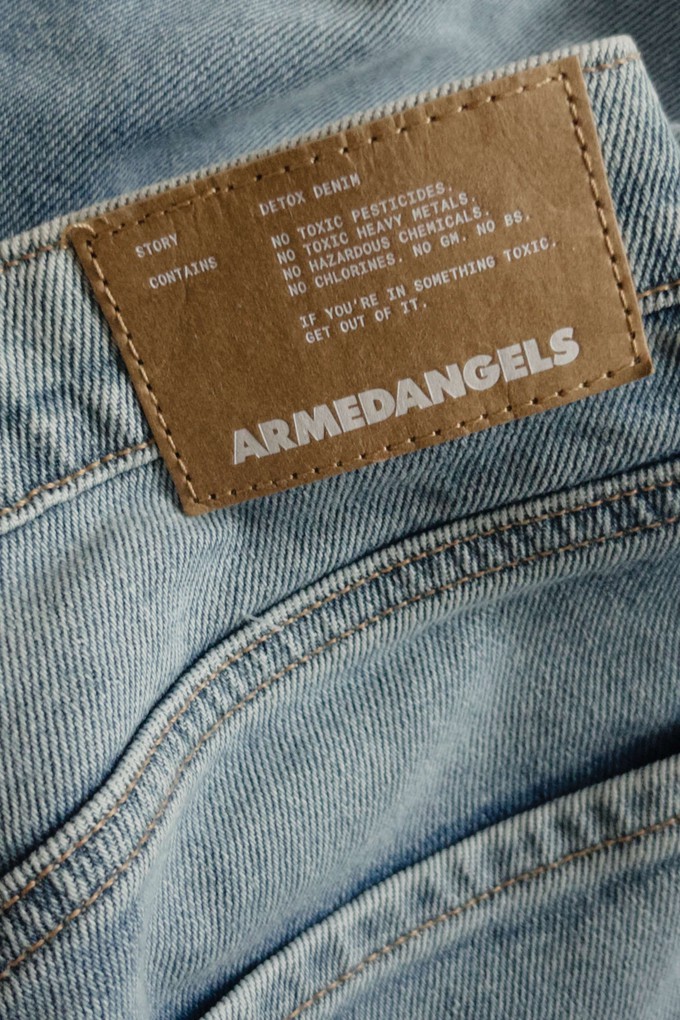
Things aren’t always black and white. For example, while their jeans tend to be a bit better for the environment, Levi’s isn’t as ethical as you might think. For instance, they’re still refusing to sign the international accord to protect the health and safety of fashion workers in Bangladesh and Pakistan.
Overall, though, if you want to buy more sustainable denim (rather than fast fashion jeans blended with synthetic fibres, full of toxic chemicals, and designed to fall apart), look for:
- Recycled cotton
- Upcycled denim
- Denim made with 100% organic cotton or woven with natural fibres like hemp or linen
- Second-hand denim products
- Circular production, especially to reduce its high water usage (for example, MUD Jeans produce 70% less CO2 and use 92% less water)
- Innovative waterless techniques (like foam dyeing) or those using less chemicals (like spun-dyeing)
- Distressed looks achieved with laser instead of sandblasting
- Take-back schemes
- Sustainable denim brands that create durable garments and adopt an eco-friendly approach at every stage of the process
But how can you find sustainable denim without wasting hours looking for all this?
Easy: right here!
Find sustainable denim jeans and clothes on Project Cece
At Project Cece, we brought hundreds of fair trade brands in one place and added filters to simplify your choices.
Of course, that includes some denim brands—like MUD Jeans—and more generic ones that still offer plenty of jeans and denim garments.
When browsing products or brands, you can read exactly what makes them ethical. So, find the right sustainable jeans or denim garments for you.
Is denim sustainable, then? It depends. But now you know exactly how and where to find the “greenest” blue jeans!
Share our story
Related articles
Is Levi's Sustainable? [+ 5 More Ethical Levi’s Alternatives]
This brand IS making positive changes, but there’s one main problem with their production. Find out what it is, together with the best Levi’s alternatives.
Recycled Fabrics & Upcycling Fashion: Green or Greenwashed?
What's the difference between recycled fabrics & upcycled clothes? Most importantly, are they as sustainable as they sound? Let's find out!
5 Best Ethical Jeans Brands: Blue Denim Is Turning Green
Did you know that an average pair requires 7,000 litres of water? Here are the best ethical jeans brands for a more sustainable but super stylish denim model.
Project Cece is a platform that collects ethical fashion from vetted brands and shops in one place. Browse ethical fashion for women and men and find items that fit your style, budget and values!
_large.png)
![Is Levi's Sustainable? [+ 5 More Ethical Levi’s Alternatives]](/static/_versions/_versions/blogs/a_pair_of_levis_jeans_large_medium.jpg)
